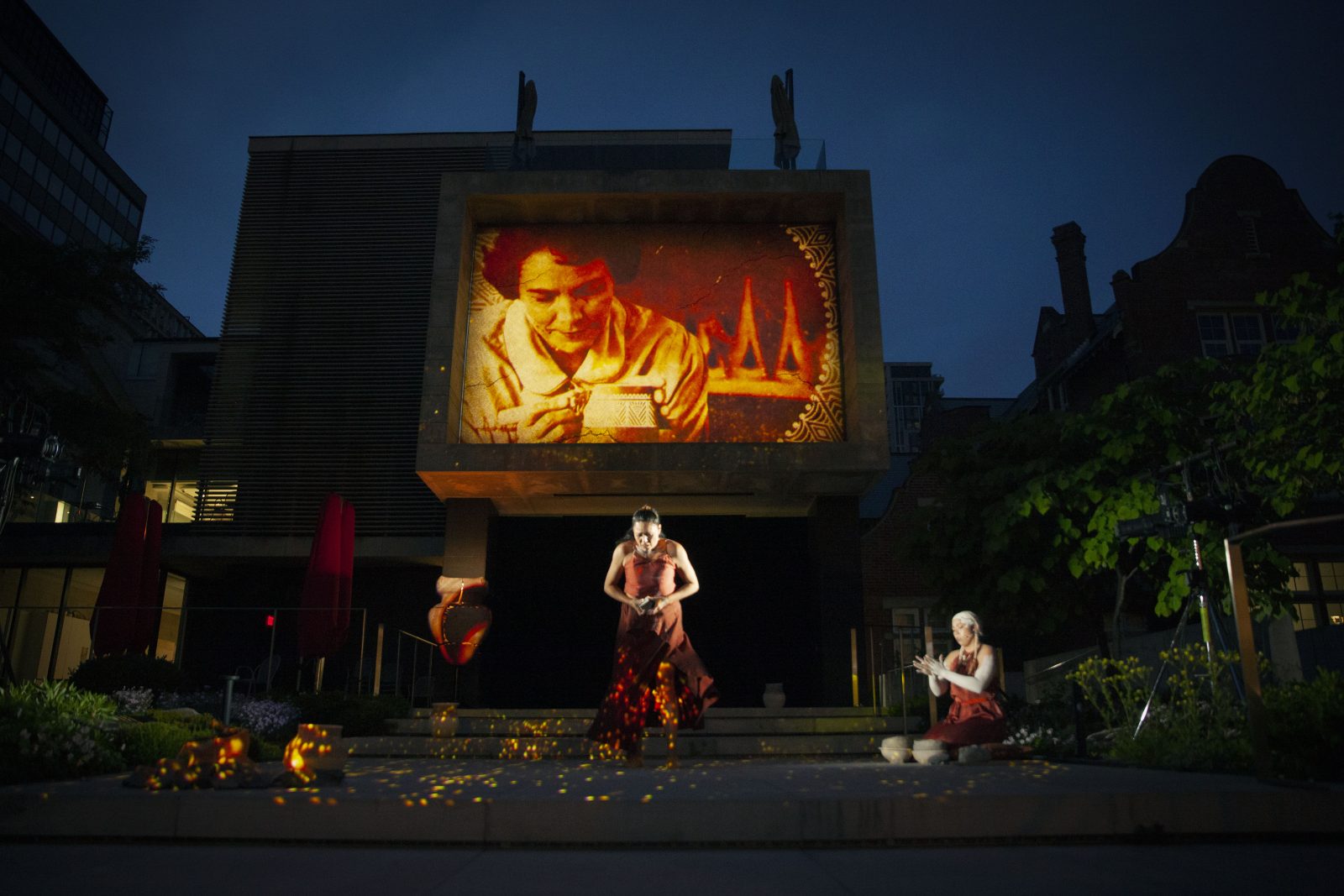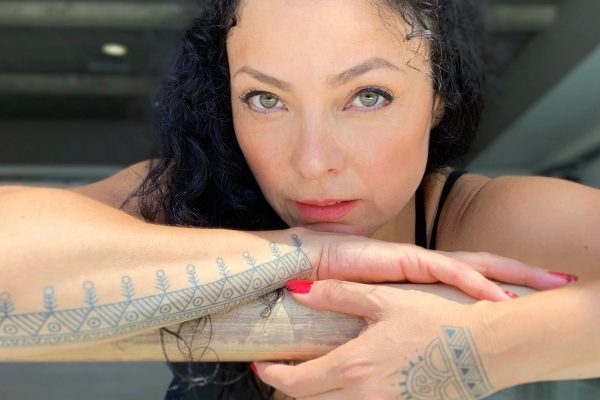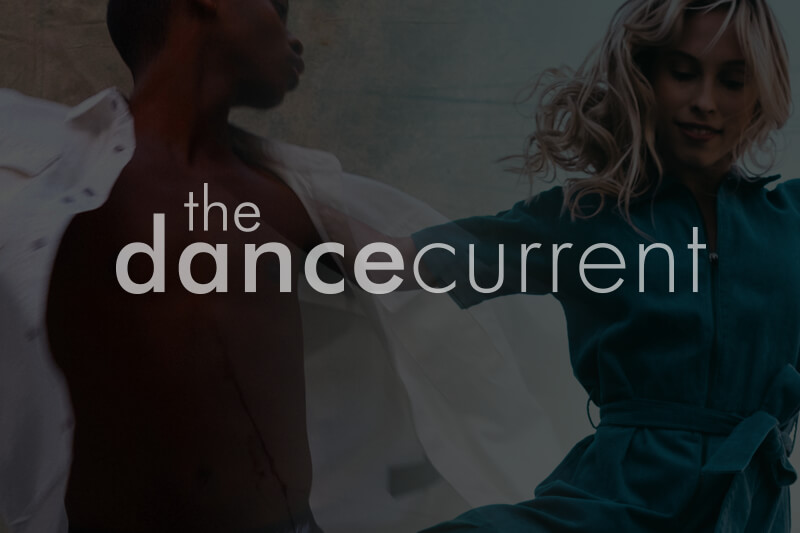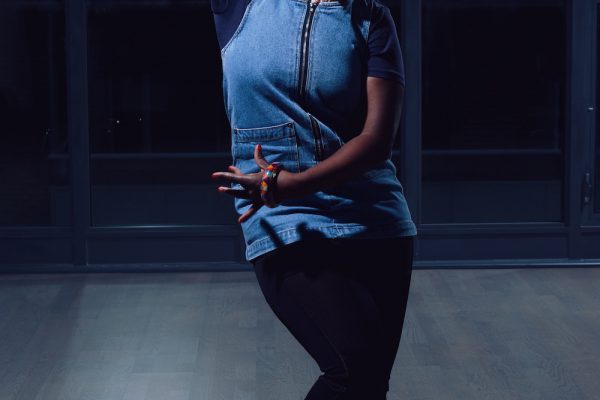Artist and director of Kaha:wi Dance Theatre Santee Smith talks with The Dance Current about Talking Earth, a multidisciplinary performance featuring a mix of visual, pottery and dance arts, which was presented June 20 to 21 at the Gardiner Museum in Toronto as part of their Indigenous Peoples Day celebration.
What was it about pottery that lends itself to a performance like Talking Earth and helping you to articulate the story?
Santee Smith: Well, it’s a long journey because it’s all integrated, as [all] my art forms are, between pottery, a more visual art; it’s very embodied because you’re working with your body so it’s very physical. It’s labour-intensive. I started out moving at a very young age, just responding to music that my grandmother would put on for me to dance around and entertain her. Elda “Bun” Smith was my grandmother from my dad’s side who revived a lot of pottery-making in our community, and she taught several other people from Six Nations, including my parents. I would dance for her and she would call my dancing her medicine. And so I sort of at a very young age, probably unconsciously, associated dance performance as impacting people and helping them. So it all ties in together. I don’t really see a distinction because, you know, for Indigenous artists, it’s much more organic and it’s really more about creativity and accessing creativity. That might come out in somebody’s storytelling or it might come out in working with clay, designing, working in the land. [It’s] still imagery, so it’s not really separate.
How would you describe Talking Earth and the inspiration behind the story?
SS: Talking Earth, that name, Talking Earth is the Talking Earth Pottery, [which] was the name of my parents’ pottery studio. And so I began, of course, working with them, and I started selling my work and using it as a form of a career [in] my early teens; my summer job would be pottery-making and [I] would sell my work. So Talking Earth, even just listen to the words, it reflects the fact that the earth is in communication, we are in communication with Earth and the importance of listening, that the earth is talking to us. So you need to be grounded and connected enough to listen and respond. So that was a part of it. And through my parents’ work, their contemporary style of pottery-making was very much about storytelling. So the symbolism and imagery was all connected to ongoing philosophy, cultural symbols, like the clan, creation story, Bear Clan, keeper of the medicines. They were teaching tools, as well as beautification was all about making beautiful designs, and in encoding our philosophy and knowledge within the design.
What do you hope audiences take away from the performance?
SS: The piece is a little more, I would say, on the meditative side. So it is dreamscape-y because it’s got this beautiful, large-scale 3D mapping onto the building and it comes down onto the staircase. So it’s sort of a moving stream picture, very cinematic. Because I’m performing on cement stairs, it’s more gestural and there’s no jumping because you know the danger of being in the place that it is. But I feel that they would take in the imagery, and my hope is that they would acknowledge the land beneath the concrete of their feet underneath into the earth, into the underwater pathways that go right through to Cattle Creek. The other big theme of this piece, in the work and in the pottery and reflected into the movement, is the interplay between intactness and brokenness, or wholeness and fracture. And that is symbolic of a lot of things of the typical fracturing of Indigenous culture and people and the resilience of the remaining encoded knowledge within shards, which have been buried in the land and recovery of those shards, and the rebuilding and reconnecting and re-energizing. So I hope that, first off, that broken and intactness affects people into their own experience of what that might be, but in a larger sense, the Indigenous presence in the space that we are in Tkaronto.
Interview has been edited for clarity/density.
Dance Media Group strengthens the dance sector through dialogue. Can you help us sustain national, accessible dance coverage? Your contribution supports writers, illustrators, photographers and dancers as they tell their own stories. Dance Media Group is a charitable non-profit organization publishing The Dance Current in print and online.

Tagged:






